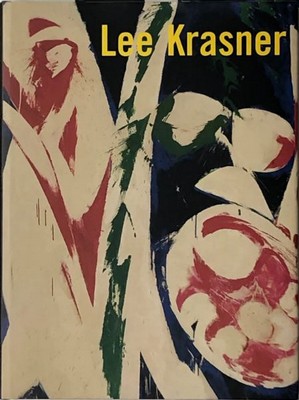Olivier Mosset
"24 Small Paintings"
Galerie Bruno Bischofberger, Zurich
30 Octobre - 27 Novembre 1999
Please scroll down for english version
Olivier Mosset est né a Berne en 1944 et depuis bientôt 30 ans, il a quitté la Suisse. Au milieu des années 60, il est parti pour Paris, ensuite pour New York où il termine ses études d'art et d'histoire d'art à l'Université de Colombia. Il vit aujourd'hui avec sa femme à Tuscon (Arizona).
A Paris, il noue des contacts avec le monde d'Art, en particulier avec les représentants du Nouveau Réalisme (Klein, Arman, Raysse, Rotella). Il assiste Jean Tinguely et Daniel Spoerri et à cause d'eux, il connaîtra Marcel Duchamp. En réaction à leur art objectif, il se tourne en toute conscience vers la peinture abstraite. Sa peinture se rapproche au „degré zéro" (Bernard Fibicher) en essayant de tout réduire, tout banaliser et tout dépersonnaliser. Il commence avec des peintures qui montrent un „A", suivi de cercles noirs sur un fond blanc. Entre 1966 et 1974, Mosset peint environ 200 „toiles -cerlce" qui vont devenir en quelque sorte son image de marque.
Quand ensuite Olivier Mosset, le peintre „toile-cercle", rencontre Daniel Buren, le peintre „toile-raies", il va se former un duo auquel viendront se joindre Parmentier et Toroni. Il von former ensemble le goupe BMPT (Buren, Mosset, Parmentier, Toroni) qui se manifestera publiquement en 1967. Ce groupe à la stratégie radicale va rompre avec le mouvement de la peinture prédominante (Ecole de Paris et Nouveau Réalisme) pour mettre en avant-plan le principe de la neutralité et de l'anonymat. Tout comme l'avait fat dans les années 1950 John Cages dans un manifeste à propos des toiles blanches de Rauschenberg: „No subject, no Image, no taste, no beauty, no message, no talent, no technique, no idea, no intention, no art, no feeling".
A New York où Mosset se retire en 1977, il commence à peindre des toiles monochromes dont il doute pourtant du concept en tant que figure virtuelle: „Le monochrome n'existe pas. Je fais de la peinture (...)." En tant que défenseur de l'abstraction radicale, sa position n'est pourtant ni missionaire, ni porteuse de message. Elle est simplement une possibilité parmi d'autres.
La Galerie Bruno Bischofberger, qui collectionnes les oeuvres de Mosset depuis bien des années, expose une série de 24 oeuvres. Les "24 Small Paintings" (Mosset) sont monochromes et toutes de mêmes format (152 x 152 cm ). La palette de couleurs se décline dans les tons pastels, du brun au jaune, du lilas au vert et du bleu au gris. Toutes les teintes se dévollent dans différents dégradés.
* * * * *
Although originally born in Bern in 1944, Olivier Mosset has not lived in Switzerland for almost thirty years. In the mid sixties he moved to Paris, then to New York, where he read Art and Art History at Columbia University. He and his wife now live in Tucson, Arizona.
While in Paris he has his first contact with the art world, especially with the artists of Nouveau Réalism such as Klein, Arman and Raysse, and starts work as Jean Tinguely's and Daniel Spoerri's assistant. Through these artists he meets Marcel Duchamp. Mosset finds the idea of the art object which some of these artists are developing interesting, but reasons that a painting is also a good object. He starts a series of paintings that show the letter "A". This is followed by paintings which have a black circle at the centre of a white background. Between 1966 and 1974 Mosset paints approximately 200 such circle paintings that become generally accepted as his signature image.
OlivierMosset meets Buren, Toroni and Parmentier by 1967, and their circles, stripes, square dots and folded canvases are quickly agglomerated in a movement that becomes known as BMPT, after the initials of these four artists. BMPT becomes a vehicle to propagate the idea of democracy for the language and content of art. This democratisation is followed through with a pureness of purpose and a simplicity that writes a chapter of French art history, and is comparable to the American minimalism of Judd, Mangold and others. Mosset, as the youngest member of BMPT, removes gesturality from painting, and also distances himself from a system in which the artist's skill in execution elevates him to a position above that of his audience. His paintings could be done by anybody, and this is a part of their message.
Olivier Mosset moves to New York in 1977 and begins to paint monochrome paintings that deal with abstraction as silence, mutism and ineloquence. It seems that Mosset has reached a logical end point of painting, in the sense that it is difficult to imagine what can follow from his line of reasoning without crossing the line between art and non-art, excluding the thorny but brilliant interposition of Duchamp's readymade. This is perhaps not a unique occurrence in the history of art. Rodchenko's Red, Yellow, Blue or Ryman's white paintings are also logical end points. Mosset does not demarcate the limits of painting, however, because he has something fundamental to say about the process and result of painting, and is thus in some sense at the centre of it all, rather than at the edges.
Olivier Mosset blends conceptualism and minimalism into his art, but despite its radicality, he is not a fanatic. He is sensitive to the need to see his work in context and the need for judgements about sensibilities rather than logical conclusions. The viewer decides, there is no didactic dimension. There is no attempt to present the viewer with a perfect result. Mosset purposefully plays down the implications with a certain amount of understatement, which is evident in the work, in him, and when he talks about it. They are only paintings, after all.
GALERIE BRUNO BISCHOFBERGER
Utoquai 29, 8008 Zurich
www.brunobischofberger.com

